RCPE Certified Professional WAN Optimization
Last Update 2 hours ago
Total Questions : 402
Dive into our fully updated and stable 830-01 practice test platform, featuring all the latest RCPE-CP-WO exam questions added this week. Our preparation tool is more than just a Riverbed study aid; it's a strategic advantage.
Our RCPE-CP-WO practice questions crafted to reflect the domains and difficulty of the actual exam. The detailed rationales explain the 'why' behind each answer, reinforcing key concepts about 830-01. Use this test to pinpoint which areas you need to focus your study on.
-- Exhibit –
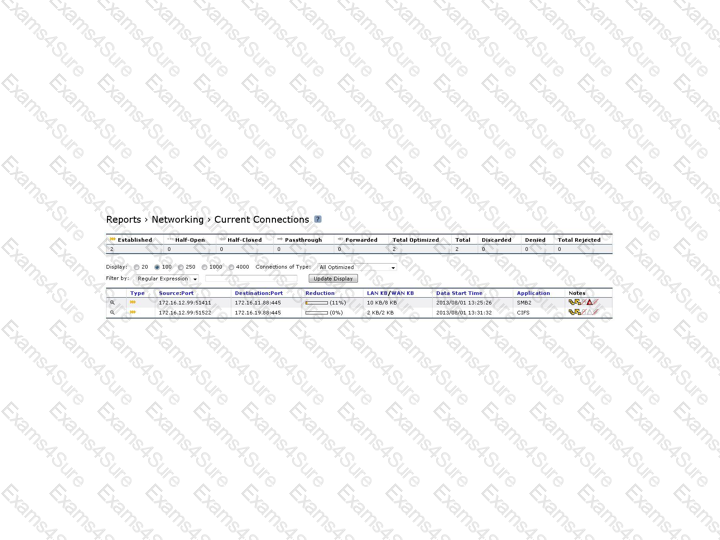
-- Exhibit --
Refer to the exhibit. When USER1 tried to map shares to Server 1 and Server 2, he got the results shown. What does the report represent? (Select 2)
A user downloads a Microsoft Excel document from a server over an optimized connection. The transfer is very fast. The user makes some changes to the spreadsheet and then saves the document. The transfer is very slow. The user edited a Word document shortly before but that downloaded and saved at the same fast speeds. What happened to the Excel document?
-- Exhibit –
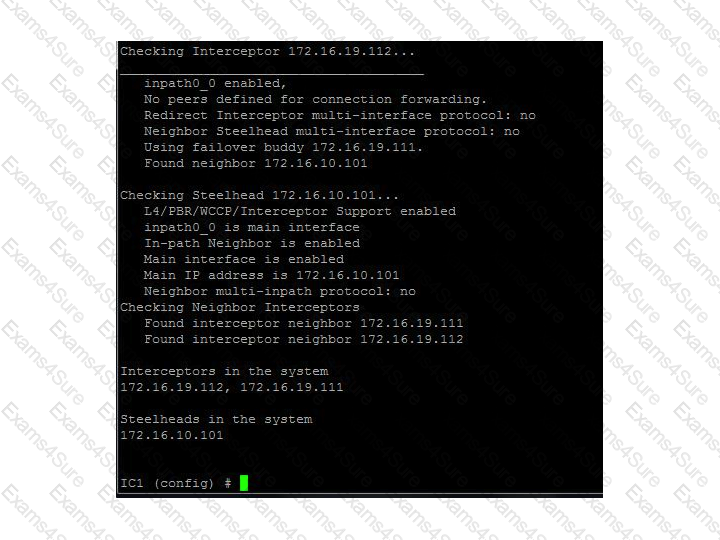
-- Exhibit --
Refer to the exhibit. A Steelhead administrator has recently decided to implement two Interceptor appliances and one Steelhead appliance on his data center. After configuring the Interceptor appliances, and the Steelhead appliance, he decided to check if the devices will work appropriately. According to the information shown, what statements are true? (Select 2)
You wish to optimize SSL connections to an internal server. Where should the server certificate and private key be installed?
-- Exhibit –
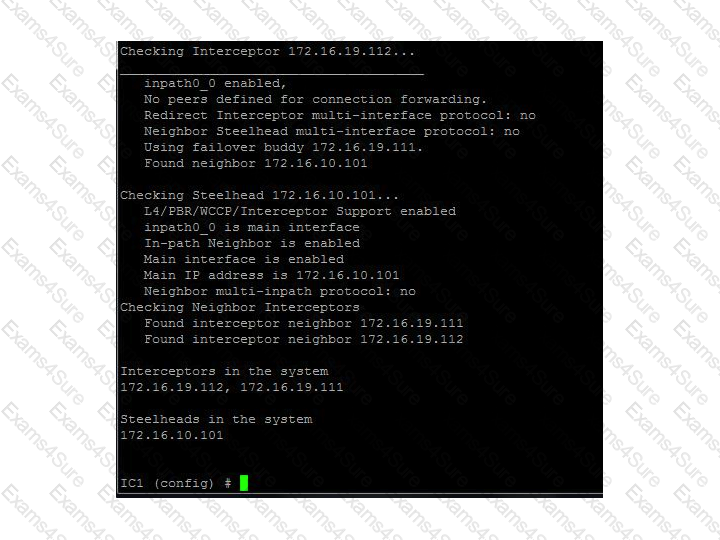
-- Exhibit --
Refer to the exhibit. A Steelhead administrator has recently decided to implement two Interceptor appliances and one Steelhead appliance on his data center. After configuring the Intercetor appliances, and the Steelhead appliance, he decided to check if the devices will work appropriately. Which Intercetor appliance diagnostic tool did the administrator use?
A customer already has a SteelHead appliance in their datacenter and wants to add Steelhead Mobile. Their current deployment has their VPN gateway in parallel with their server-side SteelHead. The customer doesn’t want to interrupt VPN clients by moving the SteelHead in-path with the VPN gateway, so they will test using a fixed-target rule to the SteelHead in-path interface. Take a look at this diagram:
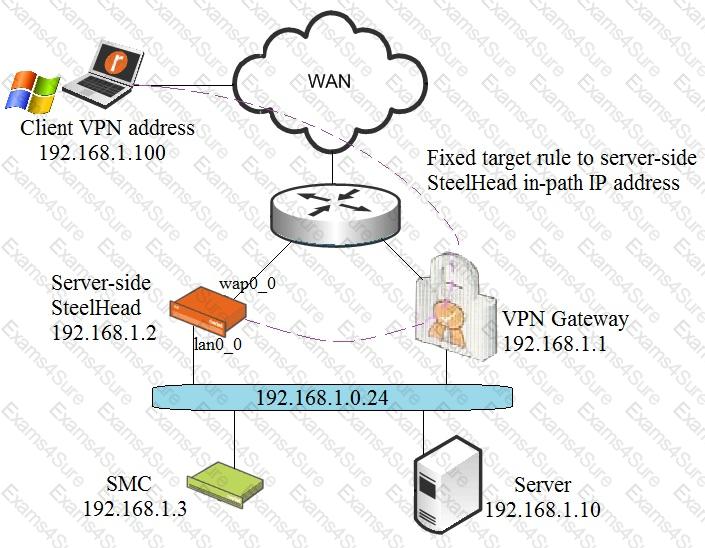
Will the client traffic be optimized to the server 192.168.1.10?
Which option below best describes the WCCP redirection supported by a SteelHead?
You have a pair of SteelHead appliances, both deployed in-path, both have a valid IP address on the in-path interfaces, optimizations are enabled and the service is started. They are unable to auto discover each other as a firewall is stripping the probes. How could you work around this on the SteelHeads?
The picture below corresponds to a connection using the SteelHead SaaS GeoDNS feature. What is the IP address of the closest Microsoft Exchange Client Access Server (CAS)?
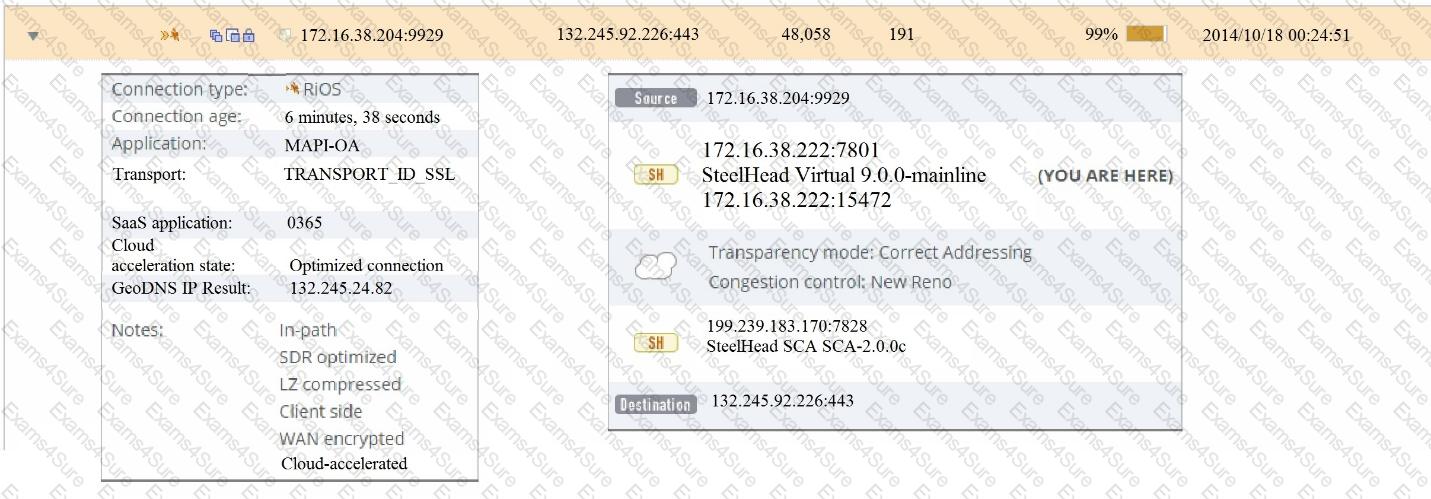
You are troubleshooting a connection which is being passed-through. An in-path rule to optimize it is present, both SteelHeads are working and not in admission control. You examine the logs and find:
[intercept.WARN] asymmetric routing between 10.11.111.19:33262 and 10.11.25.23:5001 detected (no SYN/ACK)
What is the reason for the asymmetry?


TESTED 15 Dec 2025
Hi this is Romona Kearns from Holland and I would like to tell you that I passed my exam with the use of exams4sure dumps. I got same questions in my exam that I prepared from your test engine software. I will recommend your site to all my friends for sure.
Our all material is important and it will be handy for you. If you have short time for exam so, we are sure with the use of it you will pass it easily with good marks. If you will not pass so, you could feel free to claim your refund. We will give 100% money back guarantee if our customers will not satisfy with our products.